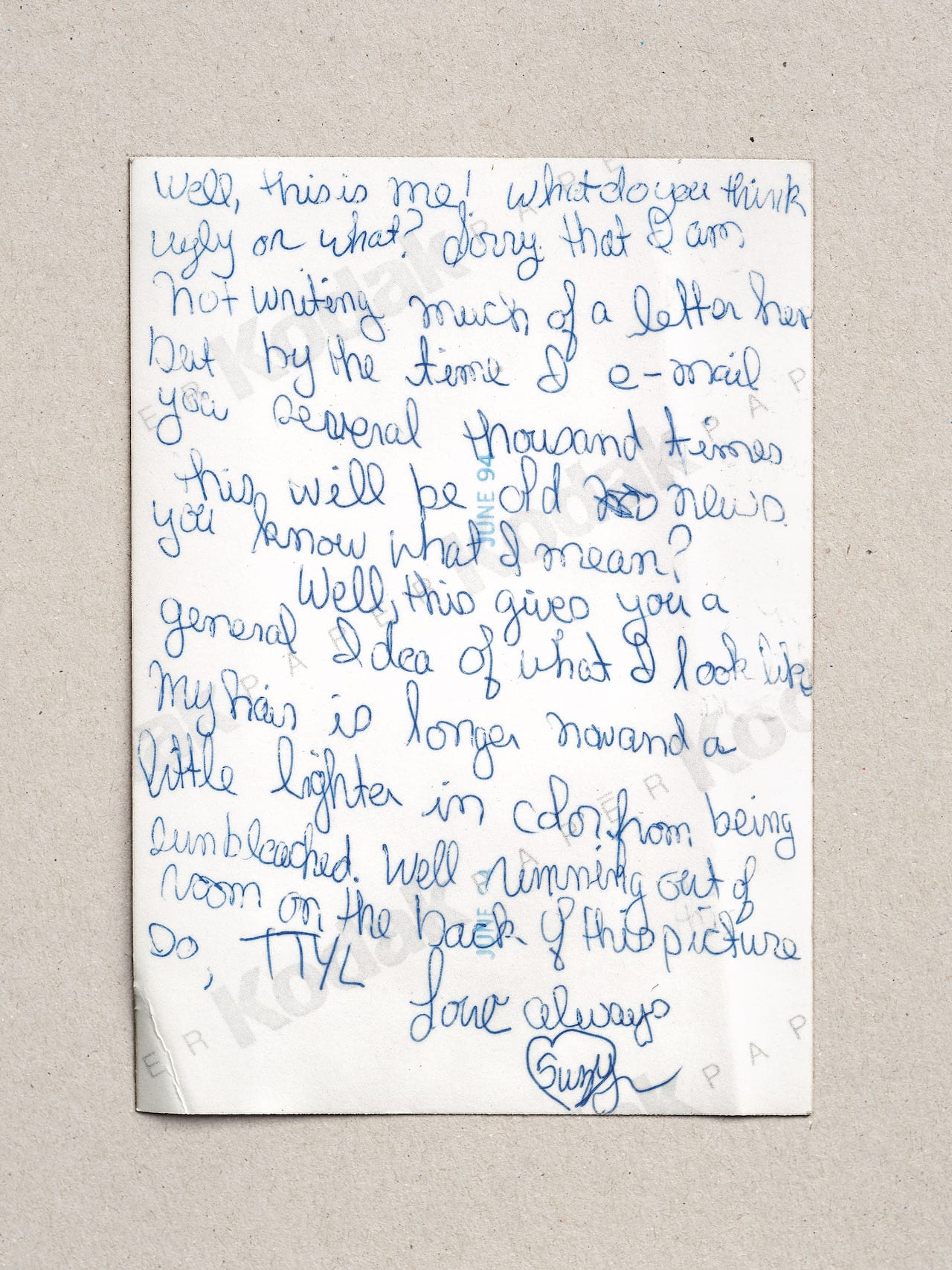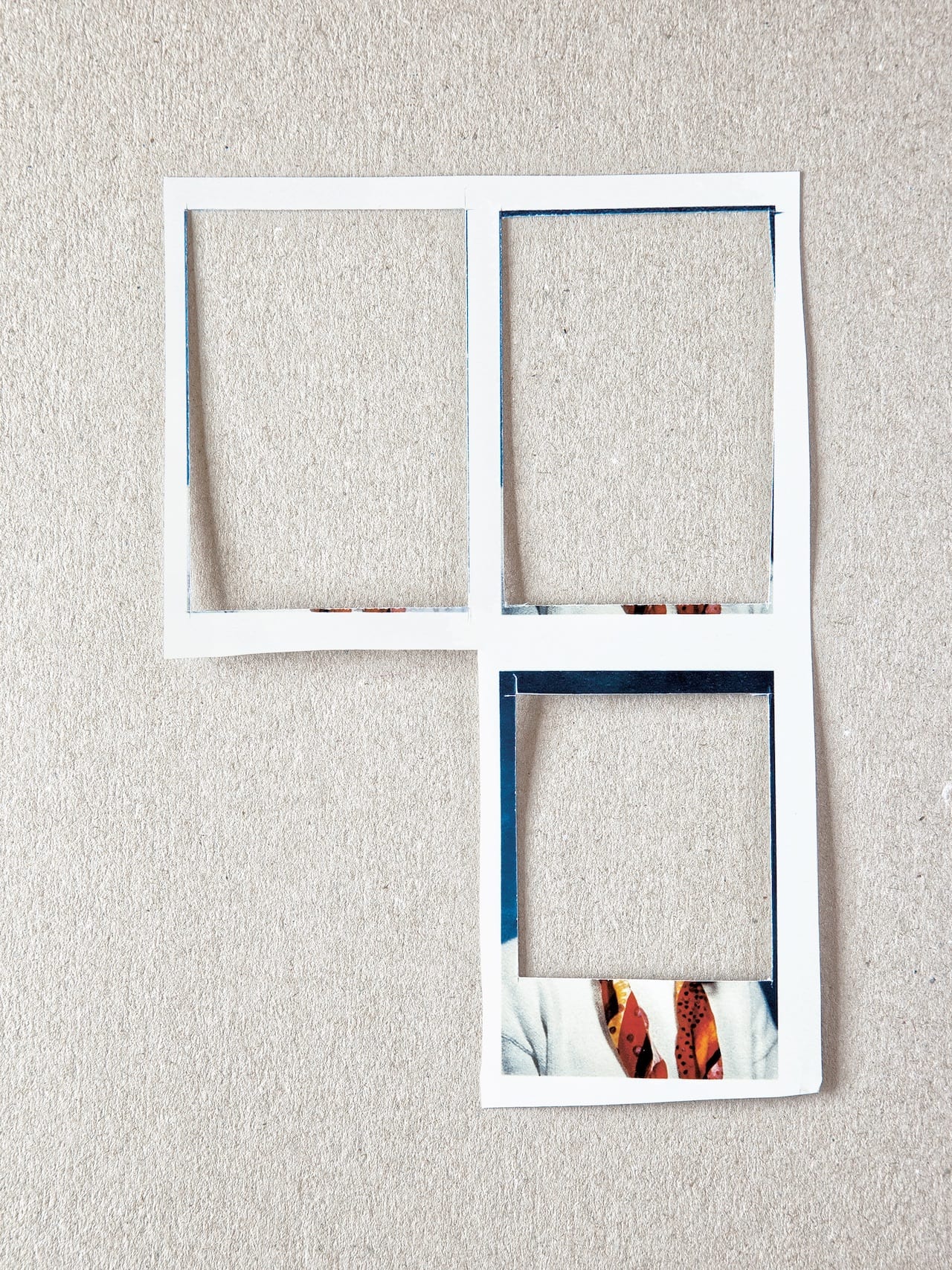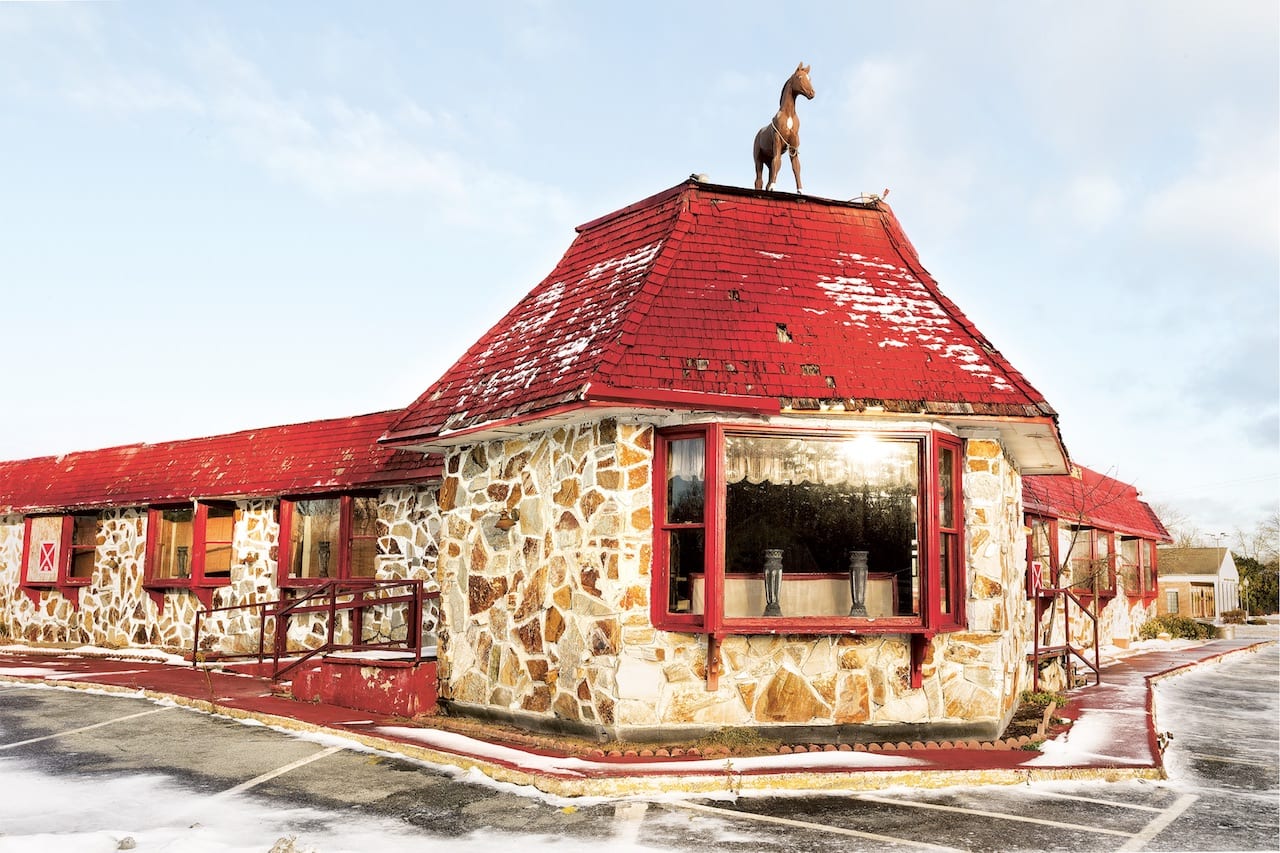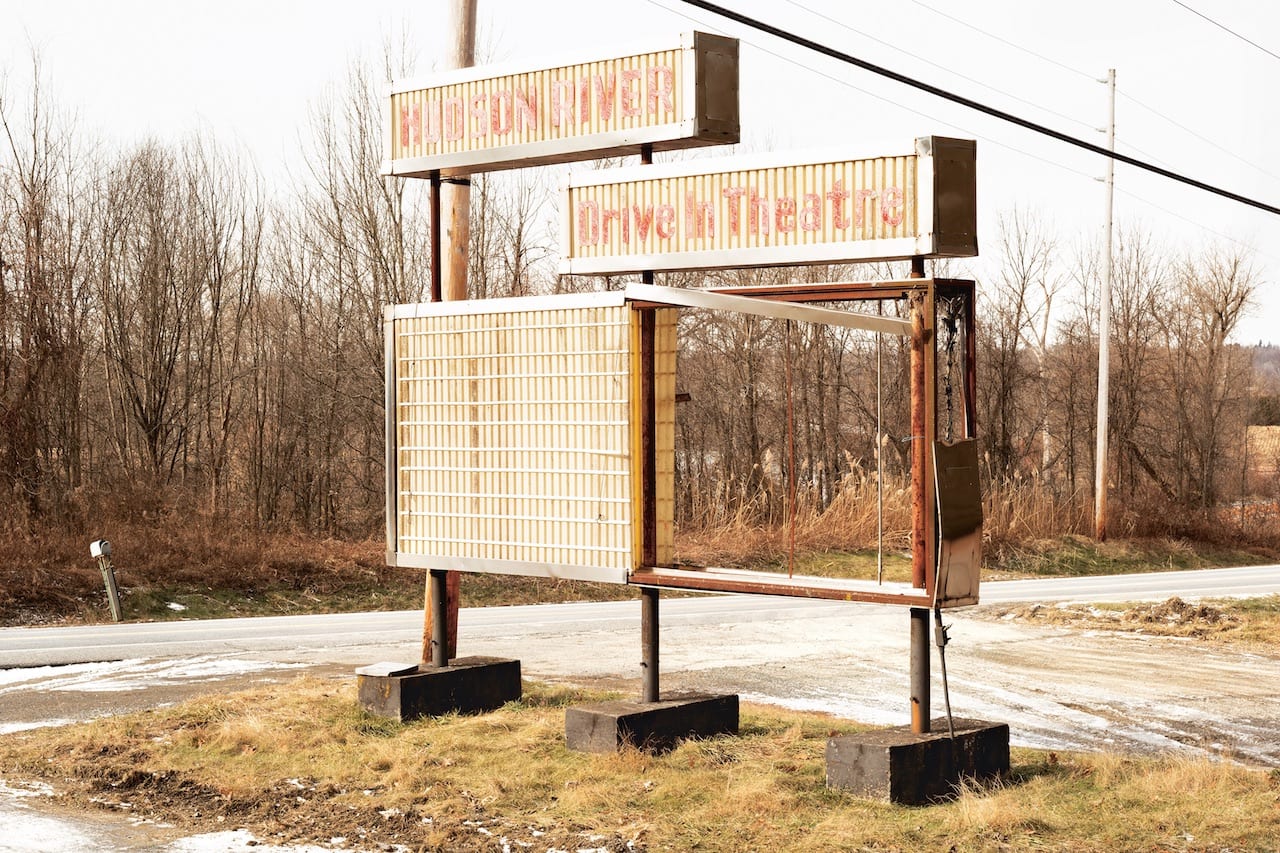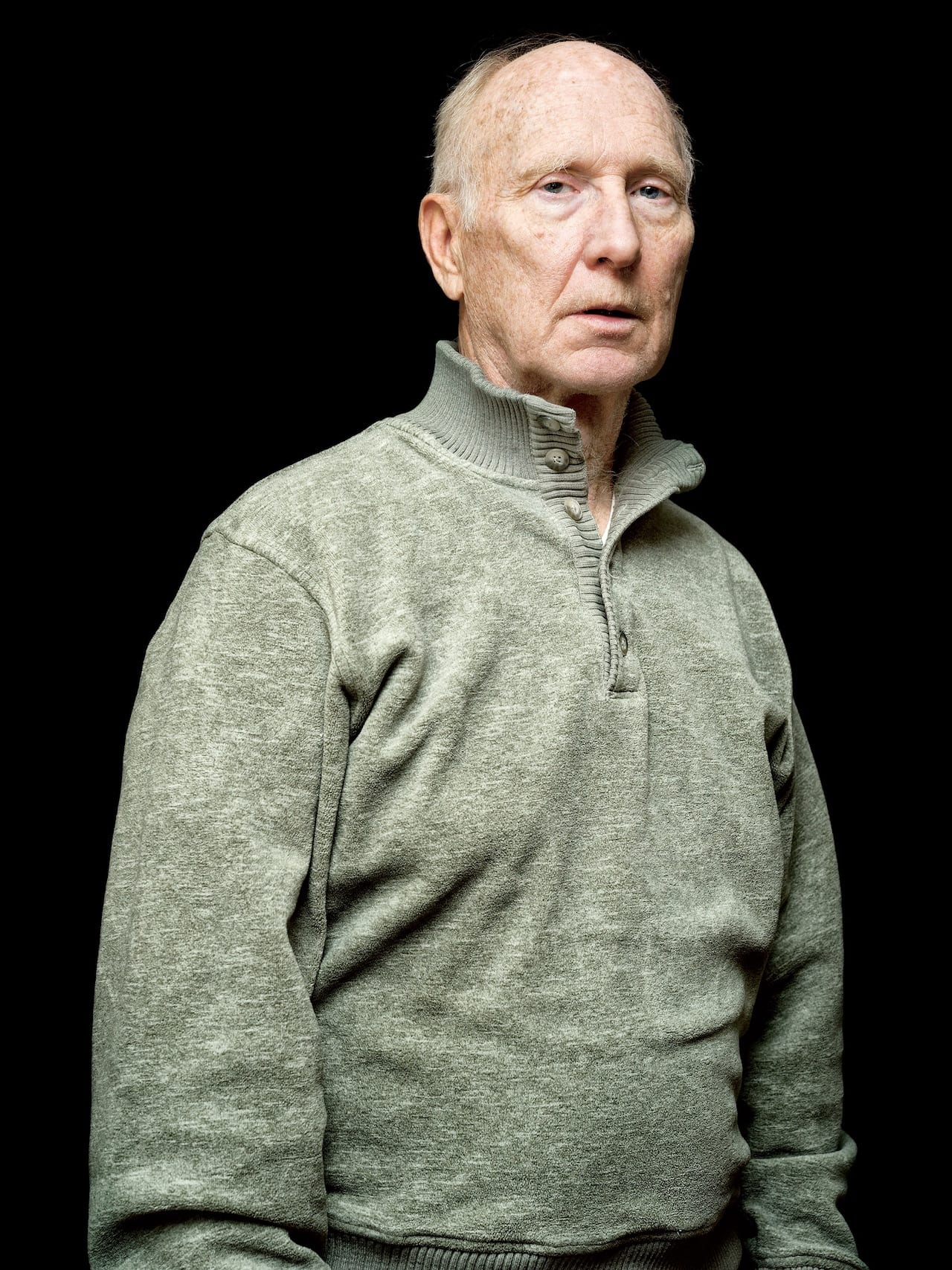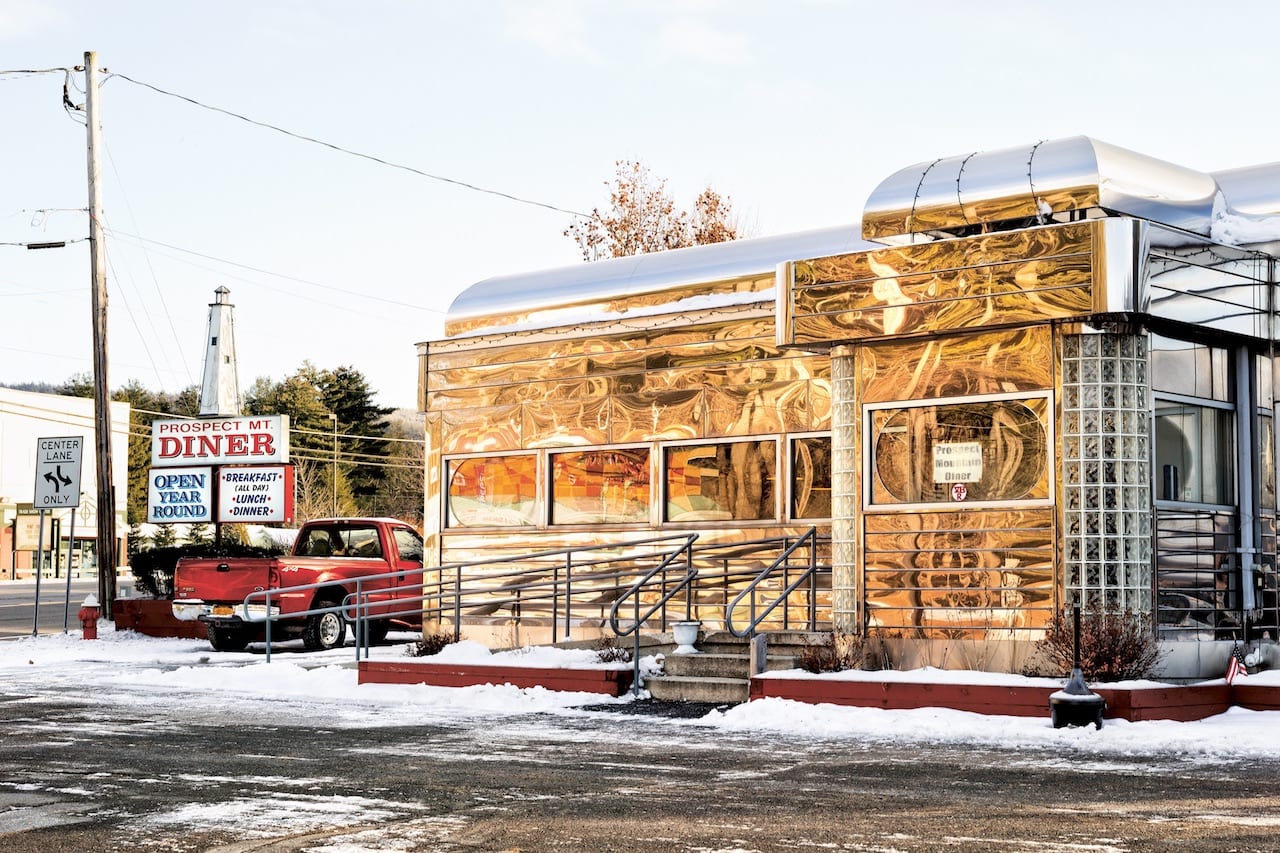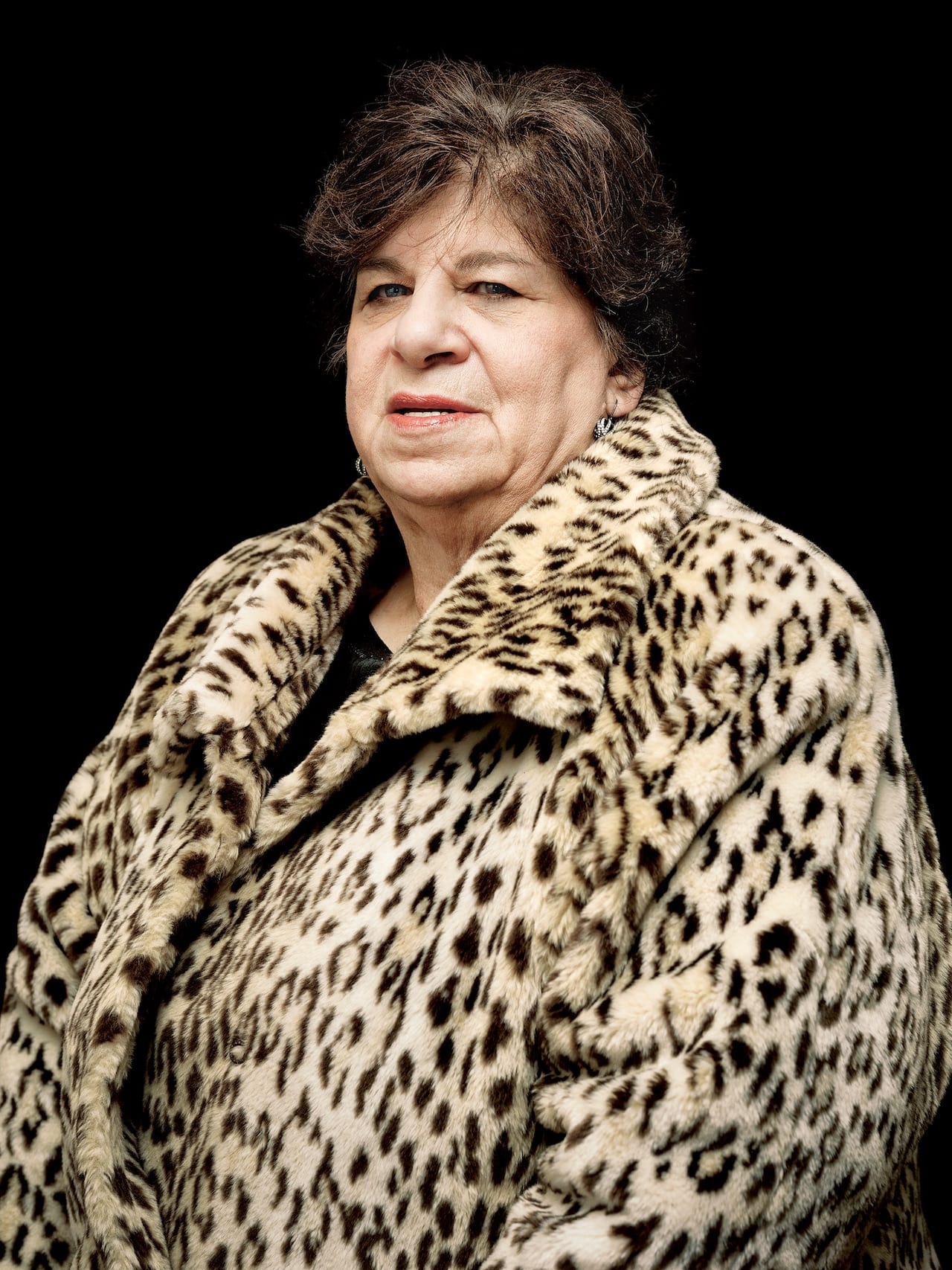Virginie Rebetez is a photographer preoccupied by absence. Her work explores themes around disappearance, loss and death, her subjects often physically absent or removed from the projects that depict them. Such is the case with Out of the Blue, which centres around the unresolved disappearance of Suzanne Gloria Lyall, who went missing in 1998 at the age of 19, in Albany, upstate New York. Out of the Blue was published last year by Meta/Books, and is showing in Mutable/Multiple at Quad during Format.
Lyall has never been found but traces of her remain even now, more than 20 years later. “Photography has this relationship with traces but also with proof and reality,” explains Rebetez, whose work attempts to make concrete something unthinkable, this vacuum, by becoming acquainted with Suzanne and her life in her absence. “It’s really interesting to work on something invisible with photography because somehow it gives something material to that which is not present,” she says.
This absence is everywhere within the work – in Suzanne’s bedroom, stark and unpeopled; in a highway theatre sign which displays nothing but an empty frame; in the cut-out paper borders remaining where pictures of Suzanne have been excised. Yet the starkest absence is, of course, Suzanne herself. Rebetez decided not to include any photographs of Suzanne in which she’s fully visible. We are only shown the edge of her jawline, or the back of her hair, or her face obscured by a hand, or another picture that the photographer has laid on top. The rationale, Rebetez explains, is to avoid binding her to images of the past.
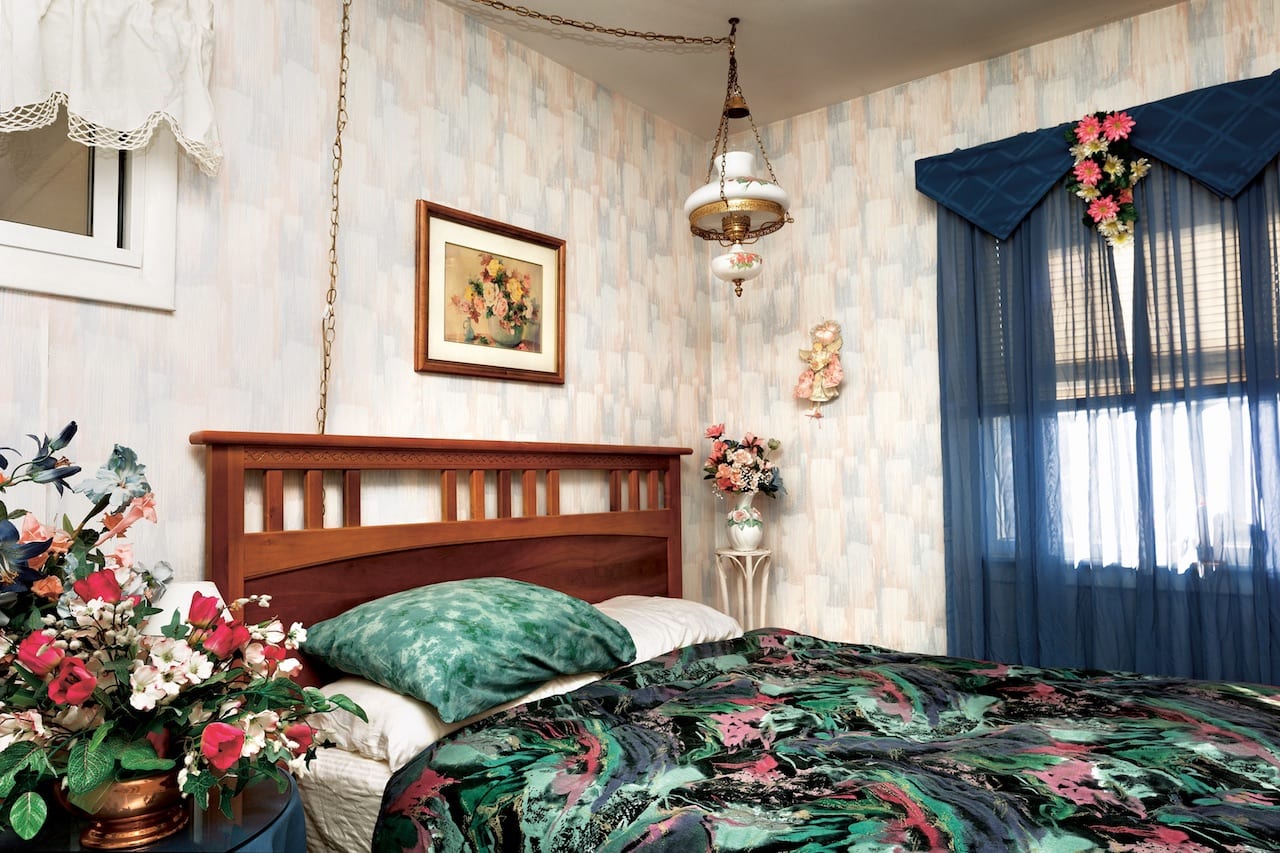
“Memory is evolving, it’s changing, it’s moving, it’s not something fixed; and I didn’t want her to be fixed in her childhood or when she disappeared,” she says. If not a moment from her life as documented by her family, then what kind of presence does Out of the Blue seek to evoke? “Something more open, and something that we can relate to,” she says.
As such, a desire to humanise underpins the work, encouraging an intimacy with Suzanne herself, made possible via the traces of her life that are presented throughout. In one image, we see the reverse of a photograph of Suzanne upon which she has written a note in the looping hand and cheerful style of a chatty teenager. There is pathos in her reference to sending “several thousand emails” in the future – a future that is thick and heavy and would not come, for her at least – and the “old news” she believes her note will become is converted instead into a precious keepsake. To read her words, as she intended them, is like having her in the room.
In a later still life, a ceramic necklace stand in the shape of a hand is wreathed in Suzanne’s jewellery, which in itself is more tender evidence of her youth: the jewels are plastic beads in gaudy colours, worn metal pendants in the shape of hearts, a safety pin holding them together. Another still life is harder to make out. The caption tells us it is a T-shirt handmade by Suzanne, now draping out of a frame, turned into a dark sculpture by her mother. The worn shape of a teenager’s clothing, more commonly seen on a bedroom floor or slung over a chair, now hangs from a frame as a memorial, an uncanny souvenir.
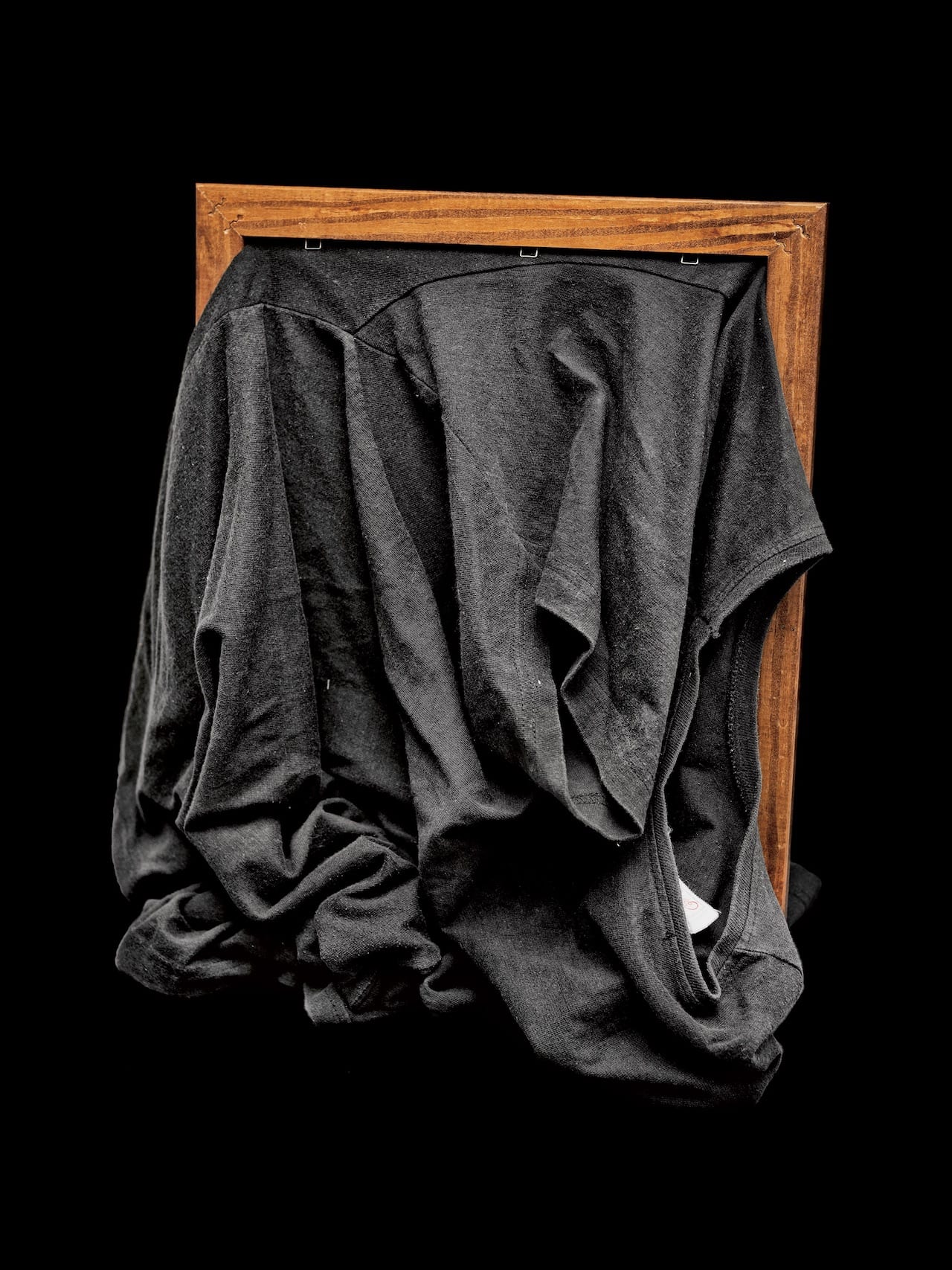
The feelings of proximity that these personal effects induce is an extension of the closeness Rebetez herself established with Suzanne and her life while working on the project. After spending months poring over Suzanne’s case, hearing stories about her, spending time with her parents, sleeping in her bedroom (which still announces itself as ‘Suzy’s Room’ via a sign on the door), Rebetez drew closer to the young woman at the centre of the story.
“She’s still next to me. I was dreaming about her. I have a feeling I have a relationship with her, definitely,” the photographer explains. “I cannot say I know her, but somehow I have a special bond.” The attention and solicitude with which Rebetez explores her case is testament to her affinity with Suzanne.
From the outset, though, the photographer took a more journalistic approach, choosing to film her initial conversations with subjects (though the footage is never used) so as to keep their details precise and close to hand; much like a detective. This role is echoed by the inclusion of what Rebetez refers to as her “wall pictures”, where her own photographs, archival imagery and other materials from the case fit together in a mosaic, like a detective’s pinboard; we can almost imagine the coloured strings linking evidence together.
“I was not interested in a case that was solved, and a reappropriation of a story,” she explains. The photographer’s studio walls are “the place where all these different materials can meet and create a new image… You can see also that there are more images going out of the frame, so you know that there is more material.”
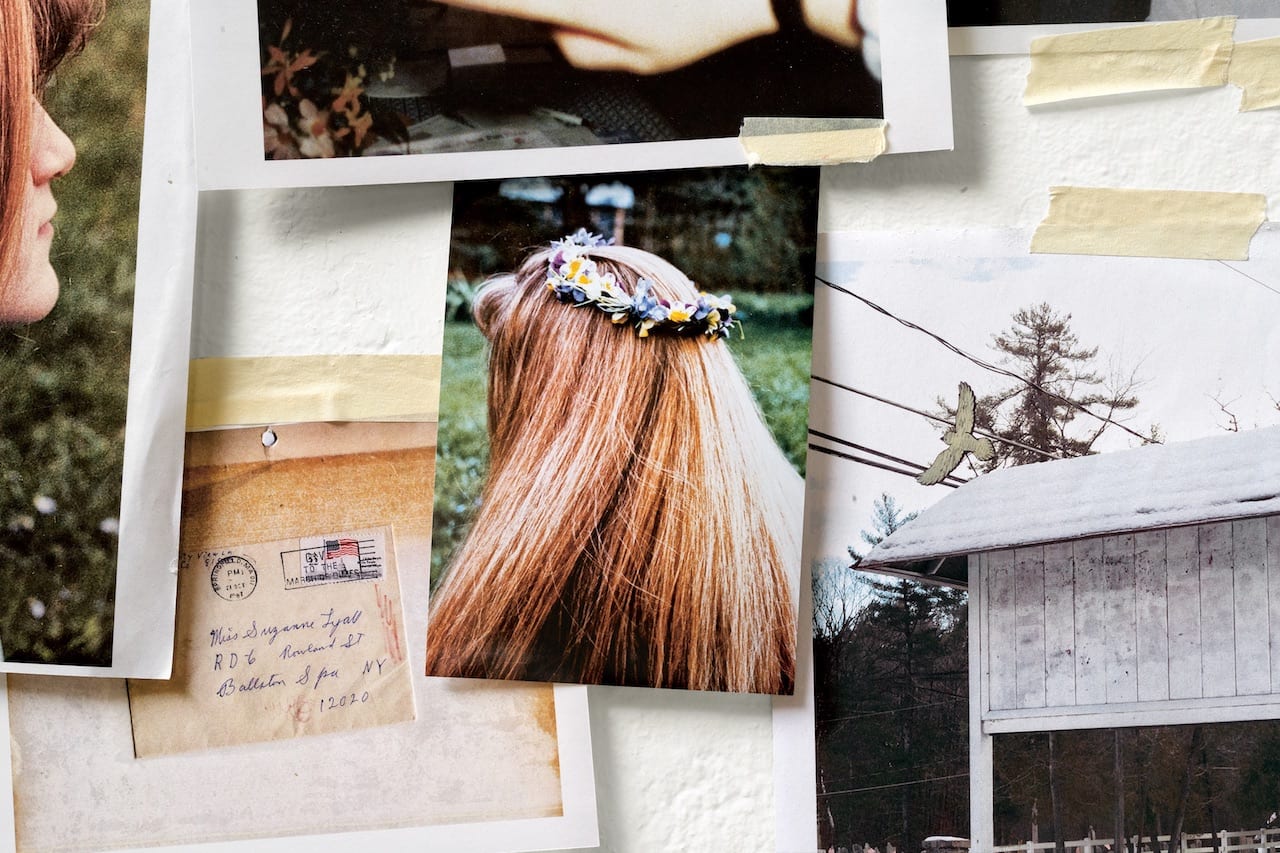
Despite the cinematic visual tropes she often adopts, Rebetez was inspired, primarily, by literature, noting Arata Tendo’s The Mourner in particular. In this story, the protagonist is overwhelmed by the weight of those forgotten in their deaths, while others are given a hero’s remembrance. He starts to travel around the country, memorialising the forgotten people killed in sudden accidents, one by one.
This seems to be Rebetez’s project at large; unearthing the life of this disappeared person, making her absence material, something to be held, hallowed. Though we never see complete pictures of Suzanne herself, Rebetez commissioned a police composite artist to create a speculative portrait of her as she would look in the present day. Even though the visual effect has the gauzy, strange effect of a computer graphic, this is the way we eventually come to see her: smiling, in her late thirties, the way she might look to us now.
virginierebetez.com Out of the Blue is on show in the exhibition Mutable/Multiple during Format Festival, 15 March – 15 April https://formatfestival.com Out of the Blue is published by Meta/Books, priced €65 https://metabooks.media

